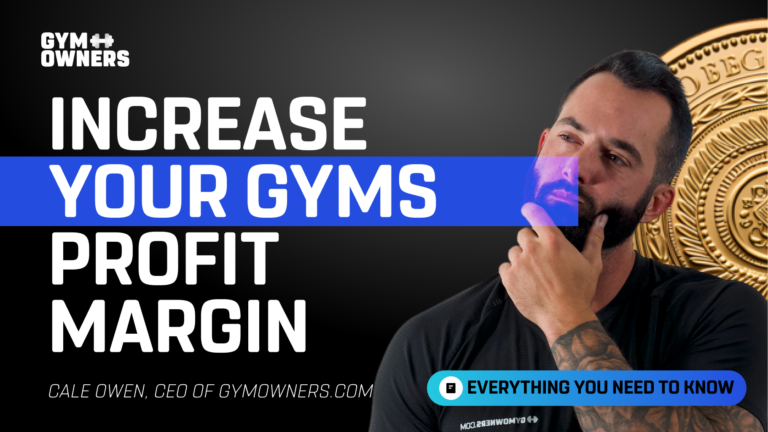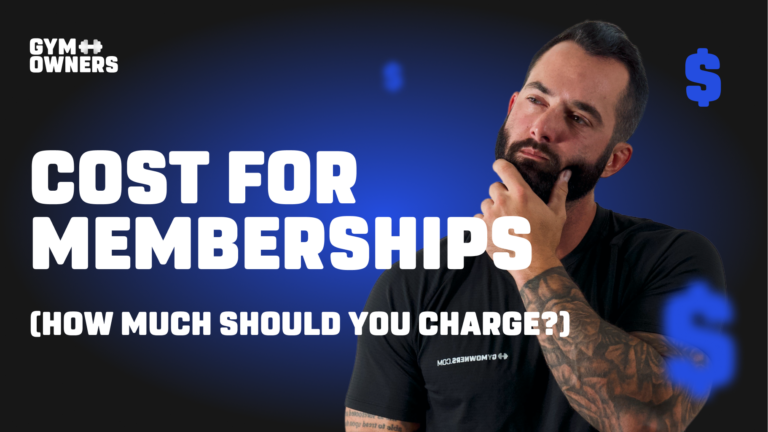How to Increase Your Gym Profit Margin
A profitable gym is one that can change more lives, and support you and your family. However, increasing profit margins in gym business can be a daunting task for many Gym Owners. Today we will break down exactly how to make sure you’re tracking your gym profit margins correctly, and give you the tips we use to increase crossfit gym profit margin, small/large group profit margins, and 1:1 training facility profit margins.
WHAT IS GROSS PROFIT MARGIN?
Simply put, gross profit is how much it costs you to fulfill on your services, or net sales minus your costs.
HOW DO YOU CALCULATE GROSS PROFIT MARGIN?
The formula to find your gross profit is also fairly simple, but we’ll walk you through it here. It’s essential to know this before you pull any levers to increase your profit so you know what areas of the business could use more cash influx.
So, to find your gross profit margin:
Gross margin ➗Revenue
(Gross Margin = Revenue per session – Cost to fulfill)
TIP #1 TO INCREASE GYM PROFIT MARGIN: SESSIONS
Most gyms offer a package that includes unlimited sessions because most Gym Owners think that will make their service more valuable. However, the more access we have to something, the less valuable we perceive that thing to be. If you’re currently offering unlimited sessions, consider making a switch.
Offering 3 sessions per week will do a couple of things. First, your services will be perceived as more valuable so they will be easier to sell at a higher price. Secondly, you will double the capacity of your gym, and be able to sell more total memberships to your gym.
TIP #2 TO INCREASE GYM PROFIT MARGIN: PRICING
Fair warning– most gyms are undercharging. Typically gyms offer a couple of packages with very similar price points. For example they may offer a $99 a month option and a $129-$150 option. The problem is there is very little reason behind these prices and there isn’t a chance for premium customers who are willing to pay more, to do so. How should you price your fitness classes? Check out what’s worked best in the thousands of gyms we’ve worked with:
Large group training session (16+ members per class): $49/week
Semi private training session (~6 members per class): $119-$149/week
Private 1:1 training session: $199+/week
TIP #3 TO INCREASE GYM PROFIT MARGIN: BILLING
When you charge your members is just as important as how you charge them. A super simple way to increase your gym profit margins is my charging every 28 days, instead of once a month. This will add a 13th billing cycle to your bottom line in the duration of a gym. So, to put that into perspective, without changing anything other than your billing cadence, you’ll increase your gym revenue by 8%.
TIP #4 TO INCREASE GYM PROFIT MARGIN: INCREASE LTV
LTV is the lifetime value of each of your clients. In simple terms, if you make each client worth more to you, you will increase your gym profit margin without having to add a single new member to your gym.
To increase your LTV you will need to either increase the variety of services or goods that the member buys or increase the number of times they repurchase.
Increasing your gym profit margin can be done by selling your current members services and goods that they need, but may be buying elsewhere such as supplements, meals, smoothies/shakes, apparel, nutrition coaching, higher levels of training, and more.
As for repurchasing, that increases your gym profit margin if you have excellent customer retention. Some ways to do this include weekly check-ins, handwritten cards, internal challenges, and member events. (Check out more ways to keep clients longer in our Gym Retention Strategies Blog).
HOW LONG UNTIL A GYM IS PROFITABLE?
This is a common question gym owners wonder before deciding if or when they will open a gym. While it depends greatly on your startup costs, individual growth, and more, here are a few examples of popular chain gyms and the amount of time it takes for them to become profitable.
First let’s take a look at the popular interval training gym, F45. According to their CFO, by year 3, their average location is doing roughly $360,000/yr in gross sales. With an initial investment of $315,000, it would take you roughly 4 years to breakeven on your investment when factoring in costs and average rate of growth.
With an independently owned gym there are much fewer fees to factor in, as well as autonomy to operate as lean as you wish. An independent gym can become profitable in the first several months if proper pre-sale and marketing takes place prior to opening.
So are gyms a profitable investment? They definitely can be if run correctly.
BEFORE YOU GO…
Tracking your revenue, and expenses is crucial to have accurate data of your gym profit margins. GymDash is the free intelligence software we recommend to gym and studio owners to stay up to date on your metrics and receive real time feedback on the health of your gym. If you’re not one for formulas and calculations, let GymDash handle the numbers so you can do what you love. Click the button below to get started.





